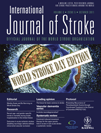An epidemiological study of stroke and its sub-types in the over 55 Mongolian and Han populations in a pastoral area of inner Mongolia
The readers of IJS may be interested to know that since the 1980s, the epidemiological survey and research carried out in China mainly focused on morbidity and mortality (1, 2), while study of the prevalence rate was not paid enough attention. Furthermore, there is even less study in stroke epidemiology on China's minority elderly population. Within China, extrapolation of current stroke incidence and prevalence studies to the rest of the population is questionable. Most studies are from urban populations and it is known that rates are likely to differ markedly between urban and rural populations even within the same country (3, 4).
In our epidemiological study, stratified multistage random cluster sampling methods were used on Mongolian and Han populations over 55 years old in a rural area of inner Mongolia.
The following results were found:
- •
the crude stroke prevalence in the over 55 Mongolian and Han population in the pastoral area of inner Mongolia was 7.36% (standardized prevalence 7.13%)
- •
the crude stroke prevalence was 7.06% in the Mongolian population (standardized prevalence 6.94%) and 7.54% in the Han population (standardized prevalence 7.19%)
- •
the prevalence of ischemic stroke in the over 55 Mongolian population was 5.18% and the prevalence of hemorrhagic stroke was 1.87%
- •
the prevalence of ischemic stroke in over 55 Han people was 5.74% and the prevalence of hemorrhagic stroke was 1.80%, and
- •
the prevalence of stroke in over 55 Mongolian and Han populations is at a higher level compared with other countries (5) (Table 1).
| Age | Mongolian (IM of PRC) | Han (IM of PRC) | Czezh Republic | Portugal | Slovenia | Latvia | Italy | Greece | ||||||||
|---|---|---|---|---|---|---|---|---|---|---|---|---|---|---|---|---|
| Men | Women | Men | Women | Men | Women | Men | Women | Men | Women | Men | Women | Men | Women | Men | Women | |
| 55–64 | 7167 | 3258 | 6908 | 34 905 | 4604 | 2637 | 5841 | 3020 | 4432 | 2524 | 4320 | 2994 | 1864 | 1114 | 3318 | 2037 |
| 65–74 | 12 376 | 5255 | 9845 | 88 040 | 11 959 | 8965 | 14 151 | 9038 | 9714 | 5966 | 8326 | 6628 | 5095 | 3416 | 8497 | 6996 |
| 75–84 | 12 037 | 8721 | 12 943 | 92 807 | 18 711 | 15 171 | 21 026 | 16 185 | 13 444 | 9760 | 10 893 | 8994 | 9172 | 7038 | 14 616 | 14 686 |
| 85+ | 5263 | 23 529 | 5882 | 58 823 | 21 192 | 17 156 | 22 701 | 20 578 | 15 631 | 12 098 | 11 456 | 9548 | 10 178 | 12 425 | 19 308 | 21 207 |
- *IM, inner Mongolian.
Understanding the stroke epidemiological data of this region is important for understanding the stroke epidemiological status of the Chinese elderly population. It also plays an important role promoting prevention and treatment levels of stroke in this area.




